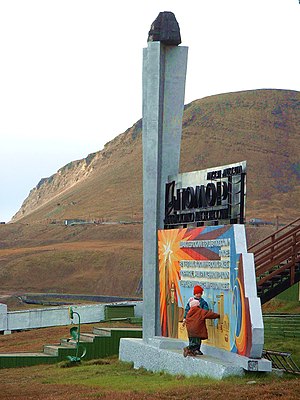Languages of Svalbard
Mainly Norwegian-speaking settlements include Longyearbyen, the capital, Ny-Ålesund and Sveagruva.
At present, Germany, the United Kingdom, France, Italy, Japan and South Korea all maintain research stations at Ny-Ålesund, although not all are inhabited year-round.
The history of Russenorsk or Russonorsk (Norwegian for "Russo-Norwegian") is mainly limited to the 18th and 19th centuries.
The Russian Revolution of 1917 brought about an end to its use; it is reported that the last Norwegian–Russian trade occurred in 1923, marking the last use of Russenorsk.
Another name for the language was Moja på tvoja that parodied a perverted Russian phrase, meaning something like "I can speak in your language" (from the Russian words моя (moya) "my", по (po) here used to mean "in" твоя (tvoya) "your") Swedish and Norwegian are mutually comprehensible to a considerable degree.

